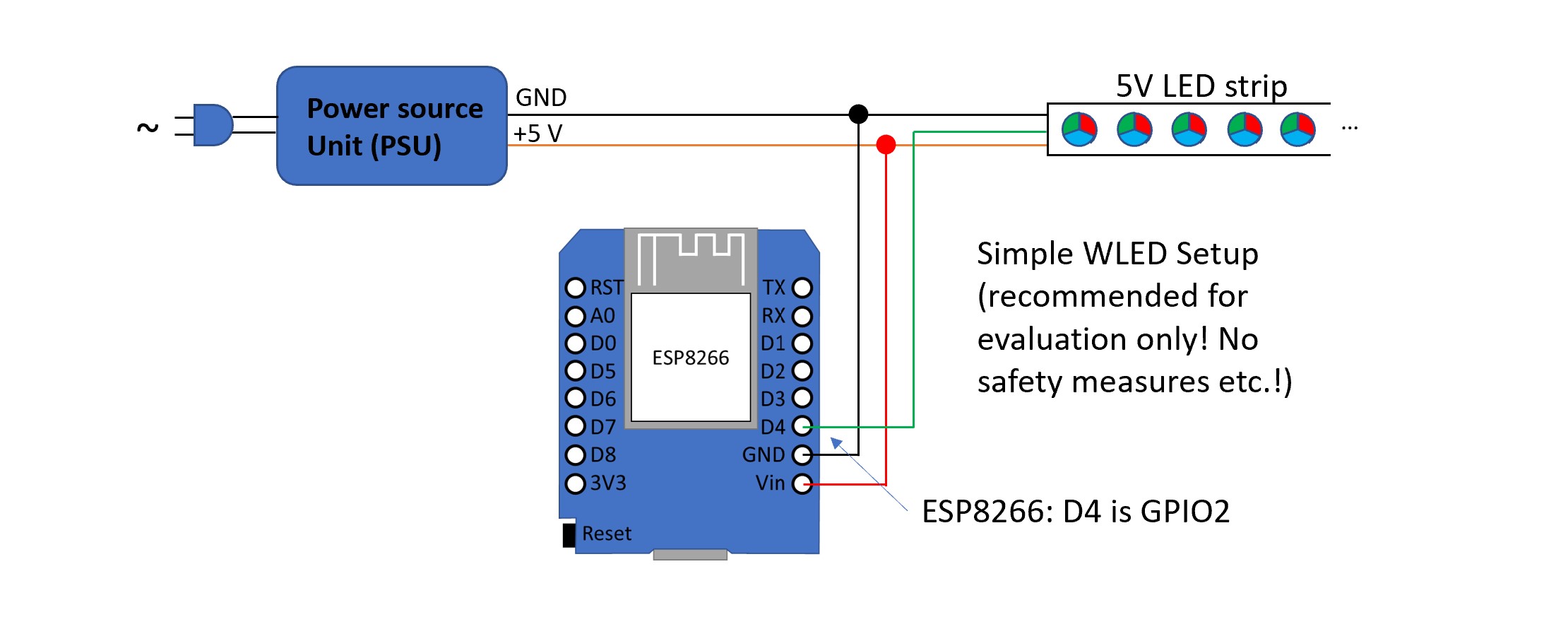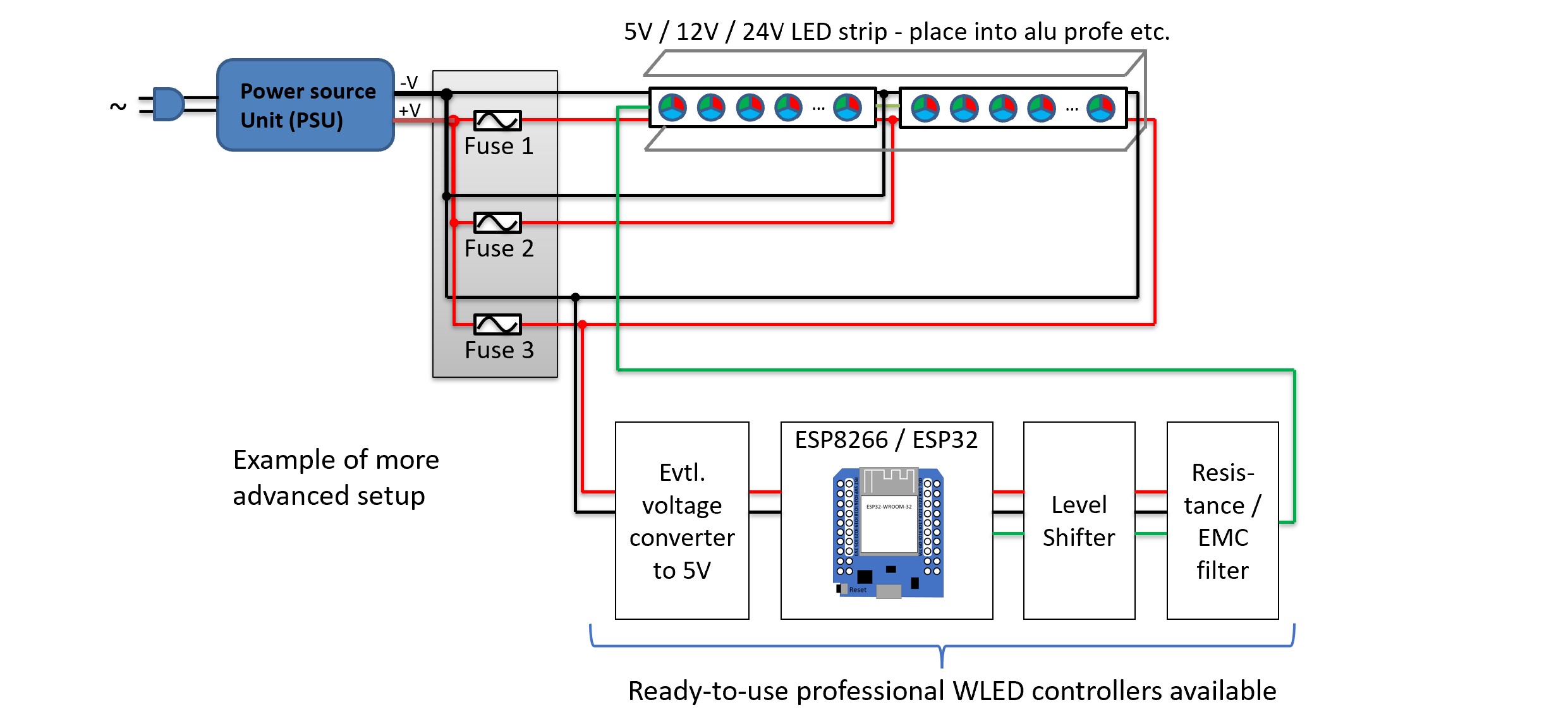The answer to this question depends on whether you just want to try WLED or want to make a reliably working and safe setup.
Trying out WLED: an ESP8266 or ESP32 microcontroller board (e.g. the so-called D1 mini or NodeMCU boards), a 5V power supply and a 5V LED strip (for starters, e.g. with 30-90 LEDs) is sufficient for this. WLED software is installed on the microcontroller (e.g. with this web-based WLED Installer).
However, there are a few other things to keep in mind for a proper setup:
1. A level shifter is required for reliable data transmission from the controller to the LED strip (this is mandatory, especially with 12V or 24V LED strips). Then you have to solder something together or you can buy a professional ready-made WLED controller right away. Due to industrial production/assembly, these are also significantly more reliable than any hand-soldered structure.
2. For safety reasons, the correct cabling (length, cross-section, contacts) and the fuses to be integrated must be considered. Especially with LED strips, it gets more complicated because you need the so-called intermediate feeds. These must be planned and implemented correctly. WLED Calculator can be used as an starting point.
3. LED strips can get quite warm during operation and even overheat in the event of a fault. Again, for safety reasons, you have to protect the area around it: you shouldn't just lay LED strips like that, ideally you should integrate them into aluminum profiles or something similar. In normal operation, these act like a heat sink and thus extend the service life of the LEDs. In the event of a fault, they can protect the surroundings.
4. To save energy while LEDs are off, you might integarte relays (or special Switch Board) that switch the voltage of LEDs off completely.